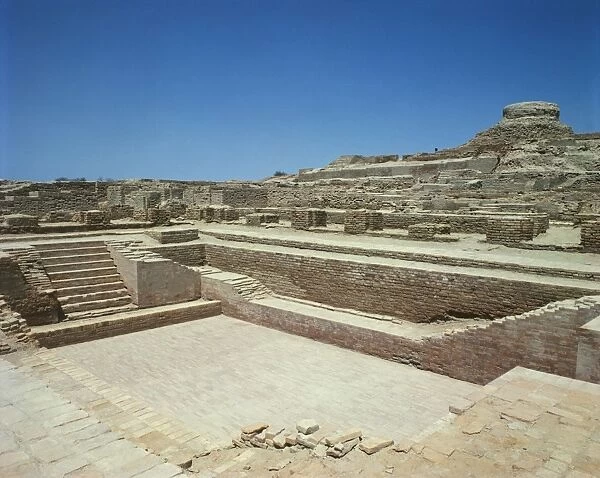Table of Contents
Mauryan Empire Economy: A Comprehensive Analysis
Introduction to the Mauryan Empire Economy
Understanding the Historical Context of Mauryan Empire Economy
The Mauryan Empire Economy was spanning from 322 to 185 BCE, marked a significant era in ancient Indian history under the leadership of Chandragupta Maurya and later Ashoka. This period witnessed remarkable territorial expansion and profound advancements in governance, culture, and economic prosperity. This article aims to delve into various aspects of the Mauryan Empire’s economy, providing a thorough analysis of trade dynamics, agricultural innovations, urban development, craftsmanship, coinage systems, administrative policies, societal impacts, reasons for decline, and lasting legacy.
Trade and Commerce in Ancient India
Key Trade Routes of the Mauryan Empire
Central to the Mauryan Empire’s economic vitality was its extensive trade network. These routes, including the renowned Silk Route, connected the empire with regions spanning from the Mediterranean to Southeast Asia. The Silk Route facilitated not only the exchange of goods but also ideas, technologies, and cultural practices. This network diversified commercial ties, mitigating economic risks and fostering sustained growth during political instability.
Impact of Silk Route on Mauryan Empire Economy
The Silk Route significantly bolstered trade revenues and economic resilience by expanding commercial engagements beyond immediate borders. This facilitated the influx of luxury goods such as silk, spices, and precious metals, enriching both imperial coffers and societal standards of living.
Agriculture and Economic Foundation
Land Revenue System
At the core of the Mauryan economy was its agrarian foundation, supported by an advanced land revenue system detailed in texts like the Arthashastra. This system ensured fair taxation and efficient revenue collection across the empire, sustaining administrative functions, public works, and military endeavors.
Role of Irrigation in Agricultural Prosperity
Mauryan agricultural success was underpinned by pioneering irrigation technologies, particularly notable in the Gangetic plains. Extensive canal networks transformed arid regions into fertile lands, ensuring food security, surplus production, and support for urban expansion and international trade.
Urbanization and Infrastructure of Mauryan Empire Economy
Development of Cities under Mauryan Rule
Under Mauryan governance, cities like Pataliputra thrived with well-planned layouts, bustling markets, and effective governance structures. These urban centers served as hubs of economic activity and administrative prowess.
Importance of Roads and Water Management
Infrastructure development, including roads and water management systems, facilitated efficient trade and administrative functions. Well-maintained highways and reservoirs enhanced connectivity, supporting economic growth and urbanization across the empire.
Artisans and Craftsmanship
Promotion of Art and Crafts
Mauryan royal patronage fostered a vibrant artistic community, producing intricate sculptures, pottery, and metalwork. This cultural richness not only adorned the empire but also stimulated economic activity and artisanal specialization.
Guilds and Their Economic Influence
Trade guilds played a crucial role in regulating commerce and maintaining quality standards. They provided artisans with training, social security, and collective bargaining power, contributing to economic stability and cultural prosperity.
Coinage and Monetary System of Mouryan Empire Economy
Mauryan Coins: Types and Significance
The introduction of punch-marked coins standardized economic transactions across the empire. These coins, marked with symbols denoting weight and authority, facilitated trade and symbolized economic unity under Mauryan rule.
Influence of Punch-Marked Coins
Widely circulated punch-marked coins enhanced economic cohesion and administrative efficiency. They were accepted across diverse regions, facilitating both domestic commerce and international trade.
Administration and Economic Policies
Chandragupta Maurya’s Economic Reforms
Guided by Chanakya’s Arthashastra, Chandragupta Maurya implemented reforms aimed at enhancing state revenue, regulating trade, and fostering entrepreneurship. These policies laid a foundation for economic stability and growth.
Role of Ministers like Chanakya of Mauryan Empire Economy
Chanakya’s strategic insights shaped Mauryan economic policies, emphasizing governance efficiency, taxation rationalization, and resource management. His contributions were pivotal in sustaining economic prosperity and administrative efficacy.
Social Structure and Economic Impact
Caste System and Economic Activities
Mauryan society operated within a caste-based framework, influencing economic roles and social mobility. Trade guilds provided avenues for artisans to transcend caste barriers, promoting economic diversity and skill specialization.
Trade Guilds and Social Mobility
Guilds facilitated economic mobility by regulating trade practices and offering vocational training. They empowered artisans to navigate social hierarchies, contributing to economic dynamism and societal cohesion.
Decline of the Mauryan Empire Economy
Factors Contributing to Economic Decline
The Mauryan Empire faced internal challenges such as administrative inefficiencies, civil unrest, and external pressures from Central Asian and Greek invaders. These factors disrupted trade routes, weakened economic foundations, and contributed to the empire’s decline.
Assessment of External Threats
Invasions threatened territorial integrity and disrupted economic stability. They undermined established trade networks critical to the empire’s economic vitality, exacerbating internal turmoil and economic decline.
Legacy of the Mauryan Economy
Influence on Subsequent Dynasties
Despite its decline, the Mauryan Empire’s economic legacy endured. The Gupta Empire built upon Mauryan economic principles, expanding trade networks, and fostering cultural and intellectual achievements.
Comparative Analysis with Gupta Empire
Inspired by Mauryan precedents, the Gupta Empire flourished economically and culturally. By promoting agricultural advancements, trade liberalization, and artistic patronage, the Gupta dynasty furthered India’s legacy as a center of civilization.
FAQ’s
Q 1. What was the economy of the Mauryans?
Ans. The Mauryan economy was primarily agrarian, with agriculture serving as the backbone. Trade and commerce also flourished, supported by a network of roads and a well-developed system of administration.
Q 2. Was the Mauryan Empire wealthy?
Ans. Yes, the Mauryan Empire was considered wealthy due to its control over extensive agricultural lands, thriving trade routes, and revenue from taxes and tributes.
Q 3. What were the sources of revenue in the Mauryan empire?
Ans. The main sources of revenue for the Mauryan Empire included land taxes (bhaga and bali), customs duties on goods (sulkha), toll taxes (vartani), and revenue from mining and forest products.
Q 4. What were the taxes in the Mauryan empire?
Ans. Taxes in the Mauryan empire included land taxes (bhaga and bali), trade taxes (sulkha), toll taxes (vartani), and various other levies on professions and occupations.
Q 5. What was the economic condition of post Mauryan period?
Ans. The post-Mauryan period saw a decline in centralized authority, leading to fragmented kingdoms and economic instability as trade routes were less secure and administrative efficiency decreased.
Q 6. What was the economy of Ashoka?
Ans. Ashoka’s reign saw a continuation of the agrarian-based economy with an emphasis on state control over key resources and trade routes, but also a focus on moral and social welfare rather than expansion.
Q 7. Why did Maurya Empire fail?
Ans. The Mauryan Empire declined due to factors such as weak successors after Ashoka, financial strain from maintaining a large army, regional revolts, and economic challenges like inflation and administrative inefficiencies.
Q 8. Is Mauryan Empire bigger than India?
Ans. No, the Mauryan Empire was not larger than modern-day India. It encompassed a significant part of the Indian subcontinent but did not cover all regions that constitute present-day India.
Q 9. How powerful is Mauryan Empire?
Ans. The Mauryan Empire was highly powerful in its time, known for its strong military, efficient administration, and cultural achievements. It exerted significant influence over much of the Indian subcontinent.
Q 10. What is the most valuable source of the Mauryan empire?
Ans. The most valuable sources of income for the Mauryan empire were land revenue, taxes on trade and professions, and revenues from mining and forests.
Q 11. What was the Hiranya tax in Maurya?
Ans. The Hiranya tax in the Mauryan period referred to taxes collected on gold and silver, typically as a form of tribute or as revenue from mines.
Q 12. What was an important source of income for the Mauryas?
Ans. Land revenue, derived from agricultural produce, was one of the most crucial sources of income for the Mauryas.
Q 13. What is Sita in Mauryan period?
Ans. In the Mauryan period, Sita referred to arable land or agricultural land that was a vital asset for generating revenue through taxation.
Q 14. Who paid taxes to the Mauryan officials?
Ans. Taxes in the Mauryan empire were paid by farmers, traders, artisans, and other individuals engaged in professions or businesses.
Q 15. What was the capital of the Mauryan Empire?
Ans. The capital of the Mauryan Empire during its peak under Chandragupta and Bindusara was Pataliputra (modern-day Patna).
Q 16. What was the revenue system of the Mauryans?
Ans. The Mauryans employed a sophisticated revenue system where land revenue (bhaga and bali) was collected based on the produce of the land, alongside taxes on trade and other economic activities.
Q 17. What are the 5 major political Centres of Mauryan Empire?
Ans. The five major political centers of the Mauryan Empire were Pataliputra, Taxila, Ujjain, Tosali, and Suvarnagiri (identified with Junagarh).
Q 18. What was traded in the Mauryan period?
Ans. In the Mauryan period, a wide variety of goods were traded including spices, textiles, precious stones, iron, copper, and agricultural products like grains and timber.
Q 19. What was the economic condition of the Mauryan Empire?
Ans. The Mauryan Empire was economically prosperous due to its control over fertile agricultural lands, extensive trade networks, and efficient revenue collection.
Q 20. Who was the tax collector in the Mauryan Empire?
Ans. Tax collection in the Mauryan Empire was supervised by officials known as Samaharta and other lower officials who reported to provincial governors (viceroy or Kumara).
Q21. What was the agriculture in the Mauryan period?
Ans. Agriculture in the Mauryan period was predominantly subsistence farming, with crops such as rice, wheat, barley, pulses, and various vegetables being cultivated.
Q 22. Who is the son of Ashoka?
Ans. Ashoka had several sons, but the most well-known is Kunala, who played a significant role in his father’s administration.
Q 23. Who is the real wife of Chandragupta?
Ans. Chandragupta Maurya’s wife was Durdhara, though he later married Helena, daughter of the Greek ruler Seleucus Nicator.
Q 24. Who ruled after Ashoka?
Ans. After Ashoka, the Mauryan Empire declined, and several kings and dynasties ruled different parts of the Indian subcontinent, marking the end of Mauryan dominance.
Q 25. What was the downfall of the Mauryan Empire?
Ans. The downfall of the Mauryan Empire was primarily due to weak successors, financial strain, administrative issues, regional rebellions, and external invasions.
Q 26. What was the economy like in the post Mauryan period?
Ans. In the post-Mauryan period, the economy faced challenges with the fragmentation of political power, declining trade routes, and regional conflicts affecting agricultural productivity and trade.
Q 27. What was the society under Maurya?
Ans. Mauryan society was structured with a hierarchy that included the king, nobles, officials, merchants, farmers, and laborers, with laws and duties defined in texts such as the Arthashastra.
Q 28. What is the pranay tax in Maurya?
Ans. The pranay tax in Maurya referred to a type of tax imposed on goods transported across the empire’s trade routes, contributing to state revenue.
Q 29. What is the Kara tax in Maurya?
Ans. The Kara tax in Maurya was a tax levied on artisans and craftsmen based on their production and trade activities, adding to the state’s revenue.
Q 30. Why did the Mauryans maintain a large army?
Ans. The Mauryans maintained a large army to protect their extensive territory, suppress revolts, enforce authority, and expand their empire through conquest and defense.
Q 31. Who destroyed Maurya?
Ans. The Mauryan Empire did not have a single destruction event but gradually declined due to internal conflicts, weak rulers, and external invasions, leading to its fragmentation.
Q 32. What were the weaknesses of the Mauryan Empire?
Ans. Weaknesses of the Mauryan Empire included succession disputes, financial strain from maintaining a large army, administrative inefficiencies, and challenges in managing a vast empire.
Q 33. Why did the Mauryan Empire become financially weak?
Ans. The Mauryan Empire faced financial weakness due to increased military expenditures, declining trade revenues, inflation, and the strain of administering a vast empire with varying economic conditions.






Leave a Reply